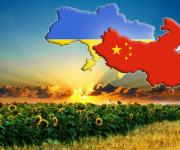Economist of the FAO investment center Andrii Yarmak told about the main trends in food trade during the export training, agronews.ua reports.
According to the expert, the following key trends defining international trade in food products can be singled out:
The openness of the markets has reached a very high level, and reverse processes have begun. More and more countries are making a choice in favor of protecting the domestic producer and popularizing the consumption of "native" products.
In developed countries, there is no longer a market for second-class products - only top-class! Consumers in the EU are already accustomed to premium-segment products, because it has become increasingly affordable, and then has actually become the standard. Products that are considered by the manufacturer as premium in the EU are ordinary products, and in the premium segment, they only come out if they have some special qualities - for example, if it is certified organic products.
Imports of products are growing faster in the countries of the ASEAN region (Indonesia, Malaysia, Philippines, Singapore and Thailand) and in general in Asian countries. Africa is now in second place in terms of growth. In these regions, growth can be organic, due to the growth of the market.
As for the EU, in fact, instead of growth, there is stagnation, which means that to get to this competitive and long-shared market, it will be necessary to displace others.
A powerful trend of healthy nutrition and organic does not lose its position in the world.
Consumers in developed countries are constantly looking for diversity and uniqueness, which means that ethnic food causes interest in the market.
Information spreads instantly, so there are no more secrets and eternal strong market positions.
No manufacturer can afford not to advertise the product, even in the B2B segment.
The further the exporter from the final consumer in a chain of added cost, the more threatening his position. At the same time, geographical distance is not so decisive.
The crazy pace of e-commerce development creates new opportunities and new challenges for exporters.
Consolidation of imports in the hands of retail chains and only a few large importers make entry into certain markets extremely competitive; however, on the other hand, hitting the suppliers of such networks, the manufacturer will draw a lucky ticket.














 Лобіювання інтересів тваринників в органах виконавчої влади
Лобіювання інтересів тваринників в органах виконавчої влади Участь в науково-практичних заходах Асоціації із залученням європейських експертів світового рівня
Участь в науково-практичних заходах Асоціації із залученням європейських експертів світового рівня Щотижневий огляд тенденцій та прогнозів розвитку тваринницької галузі
Щотижневий огляд тенденцій та прогнозів розвитку тваринницької галузі